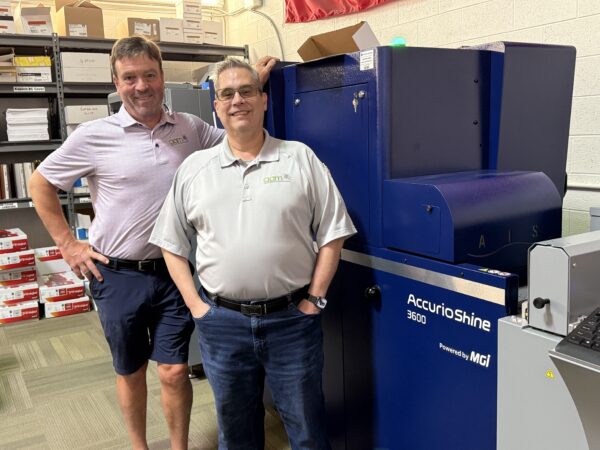It’s not just tariffs on China that might impact the office tech industry.
In April, a “Trump tariff storm” swept across the globe instead of the usual spring storms. As of April 28, the United States has imposed an additional 10% tariff on imports from countries around the world, with a particularly heavy burden of up to 145% additional tariffs on imports from China. For A3 multifunction printers (MFPs), the tariff reaches 152.5%. However, Japan’s A3 laser MFP OEMs for the workplace market had already relocated the manufacturing bases for their main U.S. export products to Southeast Asia, triggered by the 15% U.S. sanctions tariff on Chinese goods imposed in September 2019.
Currently, U.S. tariffs on non-China-produced A3 MFPs are only 10%. Nevertheless, the impact is already visible in the form of price increases in the U.S. market. Furthermore, after the 90-day suspension period for reciprocal tariff hikes (excluding China), high tariffs could also be imposed on Southeast Asian products. Due to the unpredictability of President Trump’s responses, companies are closely monitoring the situation but find it difficult to develop concrete countermeasures.
According to an emergency survey conducted by OA Life between April 11 and 16, targeting Japan’s A3 laser MFP OEMs exporting to the U.S., the manufacturing sites for workplace A3 laser MFPs are as follows:
- Ricoh Manufacturing is handled mainly by ETRIA, a Ricoh-led joint venture. Main production sites are in Thailand and China. Key export models for the U.S. are produced in Thailand.
- Konica Minolta’s main production sites are in Malaysia and China. U.S.-bound MFPs are manufactured in Malaysia.
- Fujifilm Business Innovation’s main production sites are Shenzhen, China, and Vietnam. The proportion of U.S.-bound products produced in China has not been disclosed.
- Sharp’s main production sites are in Thailand and China. Currently, almost all U.S. export products are manufactured in Thailand (with minor exceptions such as some optional components).
- Toshiba Tec – Since production is outsourced to ETRIA, they refrained from answering.
- Kyocera Document Solutions’ main production sites are Vietnam and China. Products for the U.S. market are mainly manufactured in Vietnam.
- Canon – No response by the deadline. Their main production sites are China and Thailand.
Around 2000, the major A3 MFP OEMs established factories in China, attracted by its low wages and low production costs. However, in recent years, the appeal of low labor costs in China has diminished. On top of that, from September 1, 2019, U.S. sanctions tariffs of 15% were imposed on Chinese goods. Although these tariffs were halved to 7.5% following the U.S.-China Phase One Economic and Trade Agreement on February 14, 2020, they remain in effect today. One background factor behind the OEMs’ accelerated expansion into Southeast Asian countries appears to be these tariff countermeasures.
Since then, products manufactured at Chinese plants have been mainly shipped to regions other than the U.S., such as Japan and Europe.
To deal with the U.S.’s tariff policies—which include high reciprocal tariffs on Southeast Asia (currently suspended for 90 days)—OEMs are carefully examining the various impacts while closely monitoring developments. However, due to the unpredictable nature of President Trump’s actions, they have yet to formulate clear countermeasures.
Meanwhile, according to Keypoint Intelligence, a U.S.-based research firm, the 2024 U.S. market share for workplace A3 Laser MF Devices (Segment PC–Segment 6) is as follows:
- Canon: 22%
- Ricoh: 17%
- Xerox (products manufactured by Fujifilm Business Innovation): 14%
- Konica Minolta: 13%
- Sharp: 11%
- Toshiba: 10%
- Kyocera: 8%
Together, Japanese OEMs account for 95% of the market, from Canon (No. 1) to Kyocera (No. 7).
Reflecting on the history of Trump tariffs, the U.S. first announced a 10% additional tariff on Chinese goods on February 4, 2015, and raised it to 20% on March 3. Consequently, exports of A3 laser MFPs from China to the U.S. were subject to a 27.5% tariff at that time. Then, on April 2, the U.S. imposed reciprocal tariffs on imports from all countries, and on April 9, it imposed an additional 125% tariff specifically on Chinese goods, resulting in a combined 152.5% tariff on A3 laser MFPs. As a result, exports of MFPs from China to the U.S. are believed to have practically come to a halt.
On the other hand, the U.S. imposed a flat 10% tariff on imports from all other countries on April 2 and announced additional reciprocal tariffs by country or region for approximately 60 countries. However, on April 9, President Trump abruptly announced a 90-day suspension of reciprocal tariffs against other countries. Currently, OEMs exporting A3 laser MFPs from their Southeast Asian manufacturing bases to the U.S. are subject to a 10% additional tariff, but the situation can be described as relatively stable for now.
Japan and the United States started bilateral tariff negotiations on April 17, ahead of other countries. This move suggests that sudden changes are unlikely in the immediate future. Nevertheless, if the 90-day suspension period expires without renewal, country-specific reciprocal tariffs set by the U.S. may come into effect.
If that happens:
- Vietnam would face a 46% additional tariff,
- Thailand 36%, and
- Malaysia 24%, on top of the existing 10% tariff.
If these tariffs are implemented, it would significantly impact not only Japanese MFP OEMs but also U.S. dealers and customers through substantial price increases for products and consumables.





